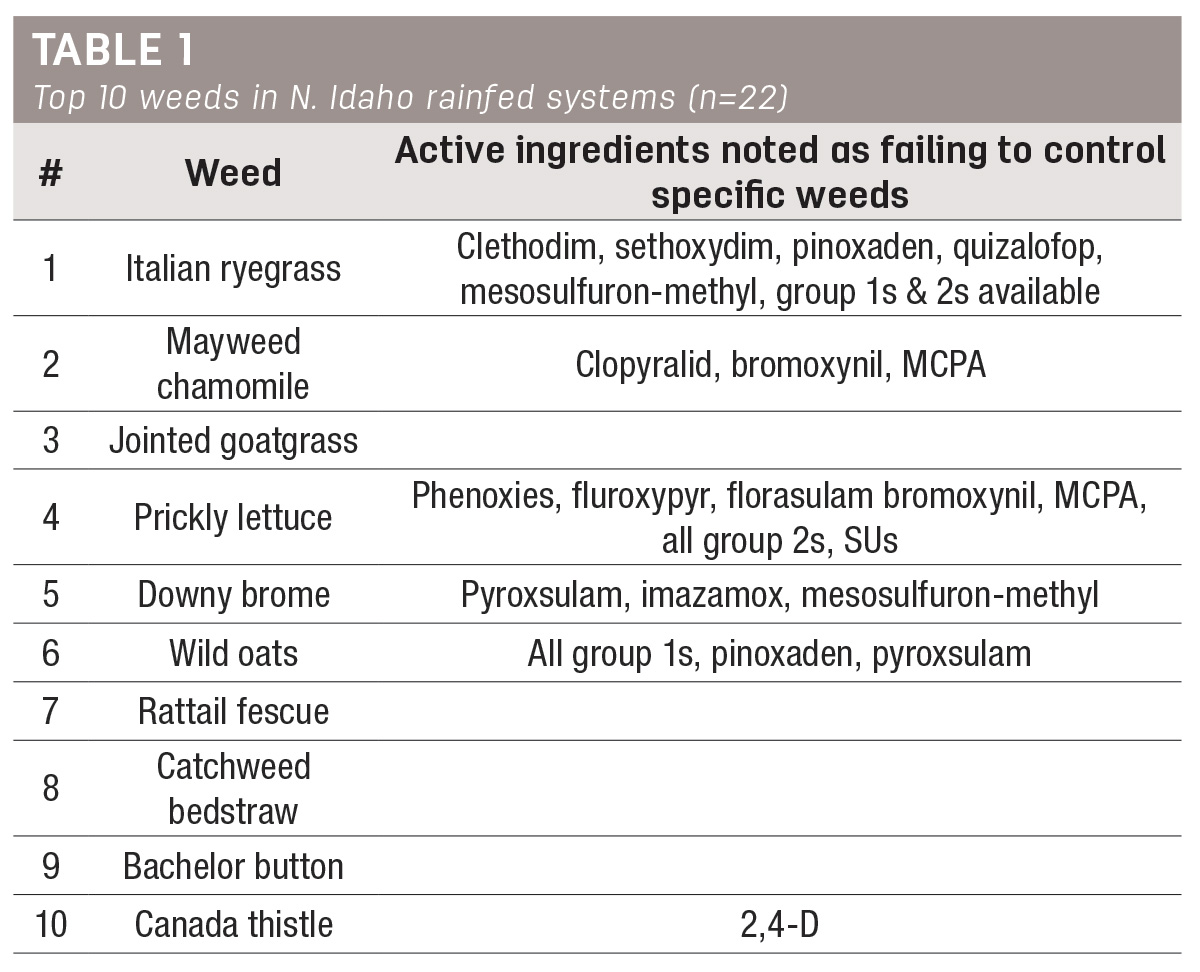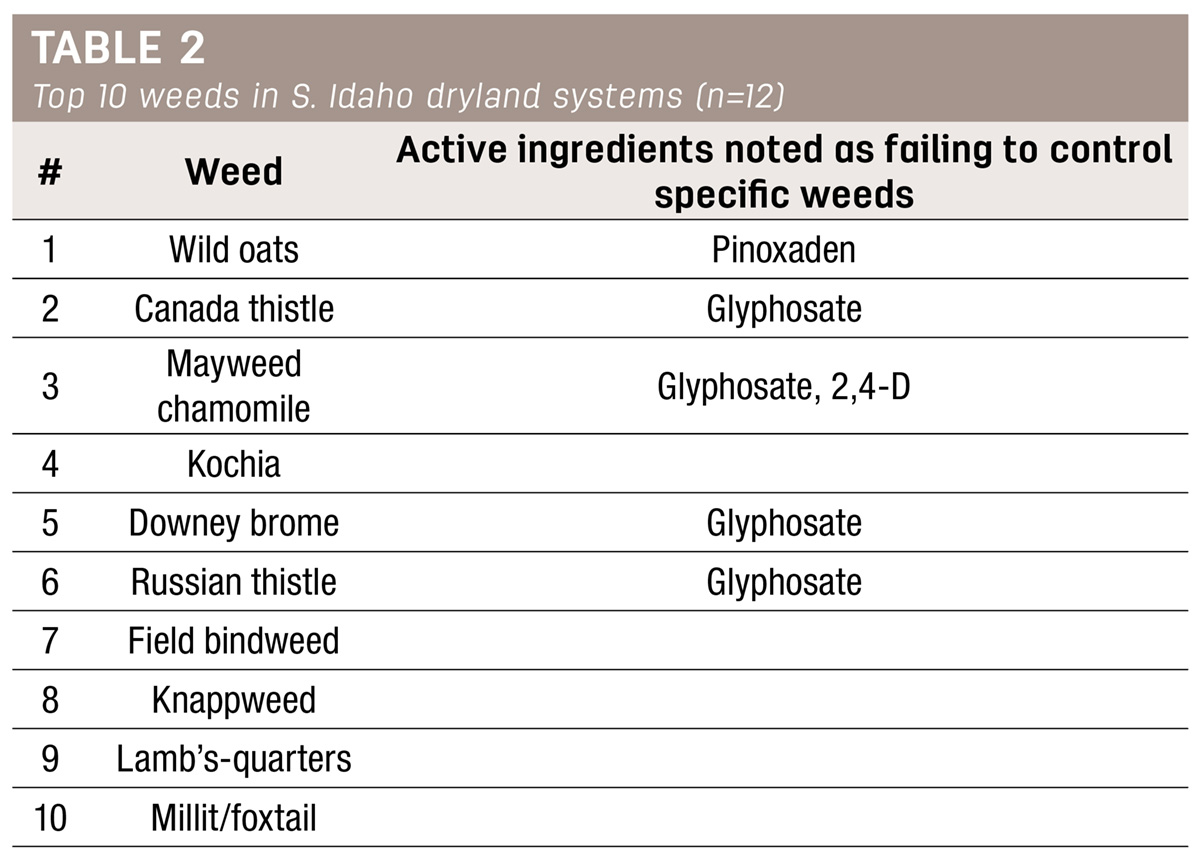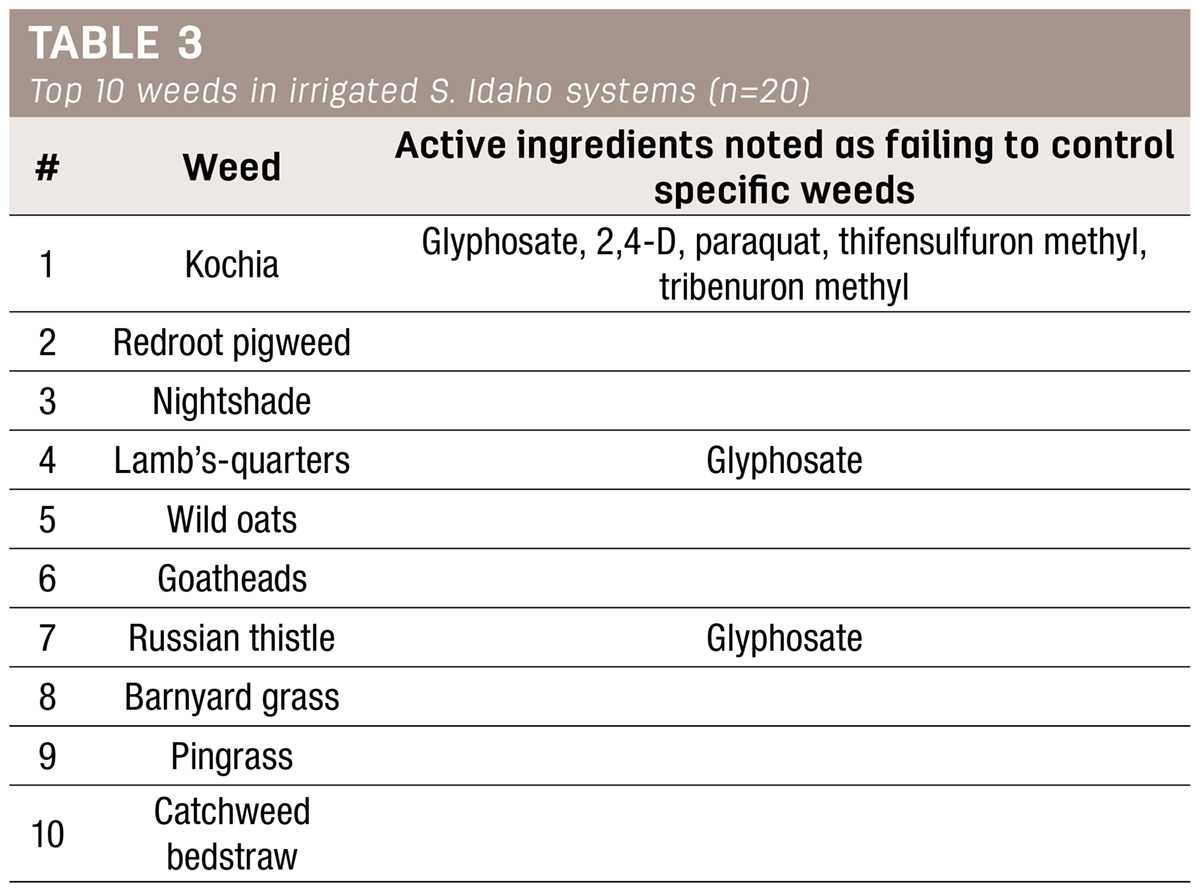This post was originally published on this site
Article Source: Most problematic weeds in Idaho's grain production systems - Ag Proud
The Pacific Northwest boasts a thriving small grains industry, but its producers grapple with relentless challenges posed by problematic weeds. To gain a deeper understanding of these weed-related issues and the farming practices adopted in the region, a comprehensive survey was conducted. The survey encompassed not only Idaho but also Oregon and Washington, collectively forming a valuable dataset for researchers and stakeholders. This article delves into the survey’s findings specific to Idaho, shedding light on the most pressing weed concerns and their implications for the state’s agriculture.
Survey methodology and demographics
The Pacific Northwest Problem Weeds Survey was initiated as part of a stakeholder input activity to inform the Pacific Northwest Herbicide Resistance Initiative’s initial areas of focus and resource allocation. The survey sought insights from small grains producers across the region, including Idaho. The survey was intentionally widespread, reaching farmers through university extension-sponsored winter growers’ meetings and industry partner outreach publications. Notably, the survey garnered 100 full responses, representing a cross-section of farmers from the primary grain-producing areas in the Pacific Northwest. These respondents collectively oversee more than 364,000 acres of farmland in the region.
Diverse cropping systems and tillage practices
Idaho’s agricultural landscape is far from uniform, as revealed by the survey’s results. While nearly 70% of respondents reported operating on annually cropped ground, a significant portion (44%) farmed a wheat-fallow rotation. Additionally, a minority (14%) practiced transition cropping, planting once or twice every three years, depending on moisture availability.
Intriguingly, approximately 22% of respondents embraced the complexity of multiple cropping systems, such as irrigated and wheat-fallow, showcasing how frequently producers in Idaho farm a variety of agricultural systems simultaneously.
Tillage practices in Idaho’s small grains farming also exhibited diversity. Around 54% of respondents favored conservation tillage, leaving some residue on the surface, or minimal/no-till practices. In contrast, 28% adhered to conventional tillage with no surface residue. A notable revelation was that 40% of respondents utilized a combination of tillage practices, showcasing their flexibility in tailoring approaches to their specific needs. This diversity underscores the dynamic nature of Idaho’s agriculture.
Key problem weeds in Idaho
The survey zeroed in on the most problematic weeds plaguing small grains producers in Idaho. Notably, the survey focused on identifying herbicides that were not effectively controlling these weeds, rather than confirming herbicide resistance. Tables 1-3 show the top problem weeds identified in Idaho by region or dominant system.



In the rainfed fields of northern Idaho where 14-24 inches of rain can be counted on annually, the winter annual grasses Italian rye and jointed goatgrass and the broad-leafed mayweed chamomile and prickly lettuce were most troublesome.
Kochia dominated the headache space in southern Idaho’s irrigated systems but was joined by redroot pigweed, nightshade and lamb’s-quarters. In the true dryland farming areas of southern Idaho, (as opposed to our rainfed northern region) wild oats, Canada thistle, mayweed chamomile and kochia were most frequently listed as problematic to control. It should be noted that wild oats were listed in all Idaho farming systems surveyed as a top problem weed.
The survey emphasized that producers were reporting herbicides’ failures in controlling specific weeds, rather than confirming herbicide resistance. Nevertheless, the comments made by respondents serve as a valuable “heads up” for potential future scrutiny and research into herbicide resistance. They also present an opportunity to educate about methods of application, such as most effective timing, correct use of surfactants, optimizing carrier volumes and use of properly conditioned water to improve herbicide efficacy.
Glyphosate and herbicide challenges
A recurring issue noted by producers in Idaho was the ineffectiveness of glyphosate, a widely used herbicide. Weed scientists have been monitoring the occurrence of confirmed glyphosate-resistant populations of kochia and downy brome in Idaho, and these reports further reinforce the importance of continued and expanded screening for herbicide resistance.
Conclusion
The Pacific Northwest Problem Weeds Survey has provided valuable insights into the challenges faced by small grains producers in Idaho. The state’s agriculture is marked by diverse cropping systems and adaptable tillage practices, reflecting the resilience and flexibility of its farmers. The identification of top problem weeds underscores localized weed management needs. Survey results helped guide weed collection survey activities in the summer of 2023 by the University of Idaho’s northern and southern weed science programs.
Of particular concern is the growing reported ineffectiveness of glyphosate in controlling critical weeds like Russian thistle and kochia. These findings emphasize the need for ongoing research and outreach efforts by the Pacific Northwest Herbicide Resistance Initiative to address herbicide efficacy issues and present alternative approaches to managing these weeds.
Ultimately, the survey results provide a crucial roadmap for decision-making and targeted strategies to enhance weed management practices in Idaho. By addressing these challenges head-on, the state can strengthen its small grains agriculture and ensure a thriving future for its farming communities.

